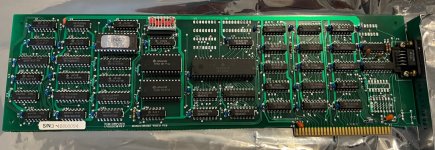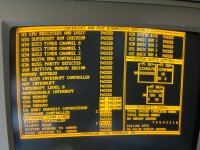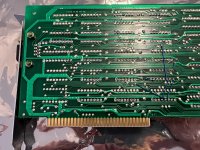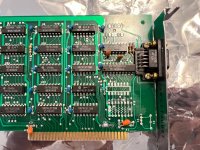So someone bumped a thread today where people were talking about the original MDA cards supporting color with a suitable monitor.
While I was reading it, there was a comment from Chuck wondering if there were any clones that supported that. I remember having a full length ISA monochrome card so I dug it out. It doesn’t seem to have connections on the rgb pins. And it turns out it’s not a clone, exactly, it doesn’t have a printer port, and the layout is completely different, using two 6116 chips instead of 8 2114. I do recall using it with the landmark supersoft diags, so it’s at least pretty close, functionally. And I think some software detected it as MDA not Hercules.
Anyway, I noticed that it doesn’t seem to have a crystal, unless I’m missing something. Isn’t a crystal required for MDA? Also it’s got a bunch of dip switches but without even a printer port, I cannot think of what they might configure. Anyone have any ideas?
While I was reading it, there was a comment from Chuck wondering if there were any clones that supported that. I remember having a full length ISA monochrome card so I dug it out. It doesn’t seem to have connections on the rgb pins. And it turns out it’s not a clone, exactly, it doesn’t have a printer port, and the layout is completely different, using two 6116 chips instead of 8 2114. I do recall using it with the landmark supersoft diags, so it’s at least pretty close, functionally. And I think some software detected it as MDA not Hercules.
Anyway, I noticed that it doesn’t seem to have a crystal, unless I’m missing something. Isn’t a crystal required for MDA? Also it’s got a bunch of dip switches but without even a printer port, I cannot think of what they might configure. Anyone have any ideas?




